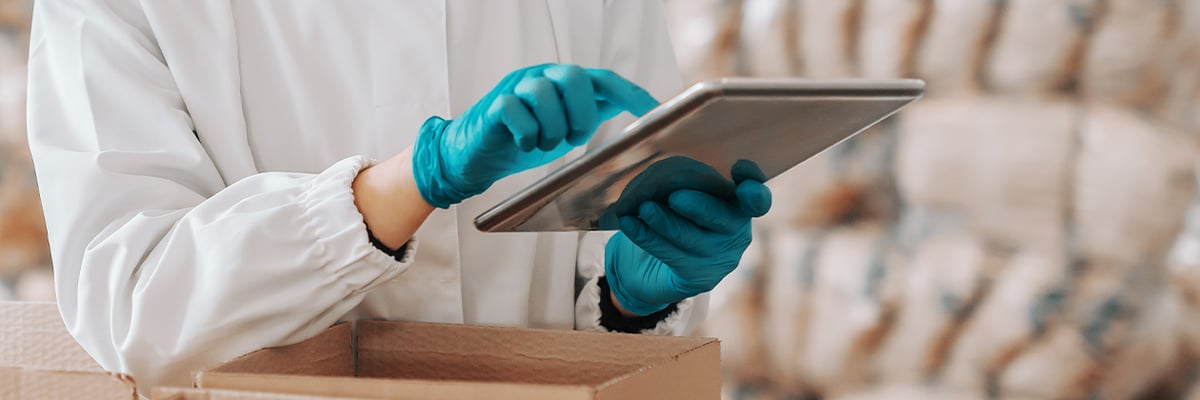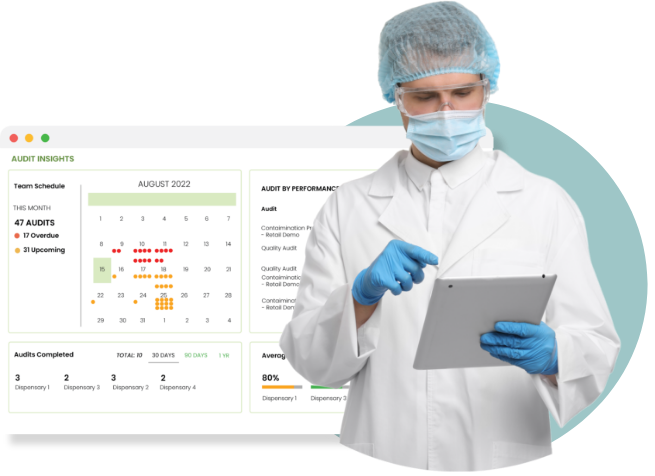Author: Ben Hartman | August 9, 2023 | 4 Min Read
“It’s All About the Consumer” How HACCP Can Make Such a Difference for Safety in Cannabis

Firefighters have a host of tools at their disposal, but for fire safety, nothing can beat prevention.
A similar concept exists in cannabis and food manufacturing, where the best way to fight product safety threats is by way of time-tested and proven preventative measures.
“The nice thing about HACCP is that it is proactive and preventative. In cannabis, we need to leave the old days of finished product testing and having a reactive approach," Kathy Knutson, Ph.D., told Rootwurks.
Knutson, the Chair of the Education Committee for the National Cannabis Industry Association and author of Food Safety Lessons for Cannabis-Infused Edibles said that Hazard Analysis and Critical Control Points (HACCP) guidelines play a crucial role in ensuring product safety in the food industry - and can make a major difference for cannabis.
“It used to be in the food industry, it was all about putting out fires and production would move along, and then there would be a problem and everyone trying to figure out what to do. Now we sit down with our HACCP team and think ahead as much as possible about what could go wrong,” Knutson said.
HACCP is a management system for identifying and mitigating biological, chemical, and physical threats to food safety. It was first developed in the 1950s as a safety program for the food manufacturing industry. For companies, a HACCP plan is a written document that specifies current product safety risks and how the company can control and mitigate them.
Why does HACCP matter for cannabis safety?
According to Knutson, these guidelines can help protect consumers who may be older or have a medical condition that weakens their immune system making them less capable of fighting off food-borne illnesses caused by contaminants in cannabis. The hazard analysis done through HACCP can help spot potentially harmful contaminants and ensure they don’t make their way into finished products.
And for cannabis companies, not having such protective measures in place can be very risky.
“There can be brand damage through consumer litigation if any harm is caused. There can be regulatory action including fines and recalls. In the food industry, the average cost of a recall is $10 million. So when I'm working with my clients I always say whatever you want to implement, at your facility, it's going to cost you less than $10 million,” Knutson said.
A solid HACCP plan can also help a company meet compliance guidelines that are focused on safety requirements and good manufacturing practices.
But implementing these preventative measures also helps companies develop a safety culture.
“When enough people are trained in HACCP and everyone is following GMPs (good manufacturing practices) it will generate a good food safety culture,” Knutson said.
Knutson said that building a safety culture is a top-down operation, and not one wherever is trying to pass the buck.
“You don’t want a company culture in which everybody just thinks that someone else is going to take care of a problem.”
She added that "upper management is responsible for the food safety culture because it has to trickle down through the whole company. If you have management that doesn’t understand food safety it's going to be really hard."
Edibles - a weak link in cannabis product safety?
Knutson said the product safety issues inherent in manufacturing cannabis edibles can be quite tricky and are similar to the issues food manufacturers contend with.
“The sourcing of ingredients is very important but there is also the cook step and timing the temperature of that cook step and then making sure that the gummy is handled in a safe environment after it cools down,” Knutson said.
Knutson described how gummies also have to be cured before they are packaged and controlling the safety of this environment is crucial for preventing cross-contamination.
But when it comes to edibles, Knutson said that chocolates can be the riskiest product.
“For me, as a microbiologist, the biggest red flag that I see in the cannabis industry is in chocolates. Chocolate is known to be associated with salmonella and control of that salmonella is during the roasting of the cocoa beans way before the chocolate reaches the edibles company.”
Knutson described how other edibles like gummies and baked goods go through a “kill step” to remove dangerous pathogens. She added that edible manufacturers receive hard chocolate from a supplier and melt it down without putting it through a kill step.
How to implement HACCP in cannabis
“Of the 40 states that have medical cannabis codes, maybe a handful require a HACCP plan. Over time there’s just going to be more and more states that require industry best practices and this includes having and implementing a HACCP plan.”
In a Cannabis Industry Journal article, Knutson outlines the steps needed when developing a HACCP plan. First, companies must carry out a hazard analysis. This requires identifying the chemical, biological, and physical hazards that have the potential to cause injury or illness if not controlled during processing. Then companies must take the time to determine the probability of each hazard occurring and the severity of potential illness or injury.
The results of the hazard analysis determine the procedures that must be carried out during processing, starting from the receiving of ingredients to packaging, storage, and distribution.
Knutson also told Rootwurks of the importance of naming a HACCP coordinator who is trained in HACCP. The coordinator must be able to communicate the importance of the food and product safety measures taken to everyone they work with, from maintenance to sanitation to operations.
“The best HACCP teams are multifunctional and include the departments of maintenance, sanitation, and operations. It’s not just a quality assurance exercise. Bringing all of these perspectives to the table is super important,” Knutson said.
And while the process may be complicated at times, the importance of implementing HACCP guidelines is clear as day.
"It's all about the consumer so we want to make sure the product is safe for the consumer,” Knutson said.
Contributors

Ben Hartman
From HACCP certification to the basics of hygiene, our on-demand courseware has you covered.


-1.jpg?width=2254&height=400&name=WeedWonks%20is%20Back!_%20(1)-1.jpg)



.jpg?width=120&height=80&name=Baby%20(1).jpg)

